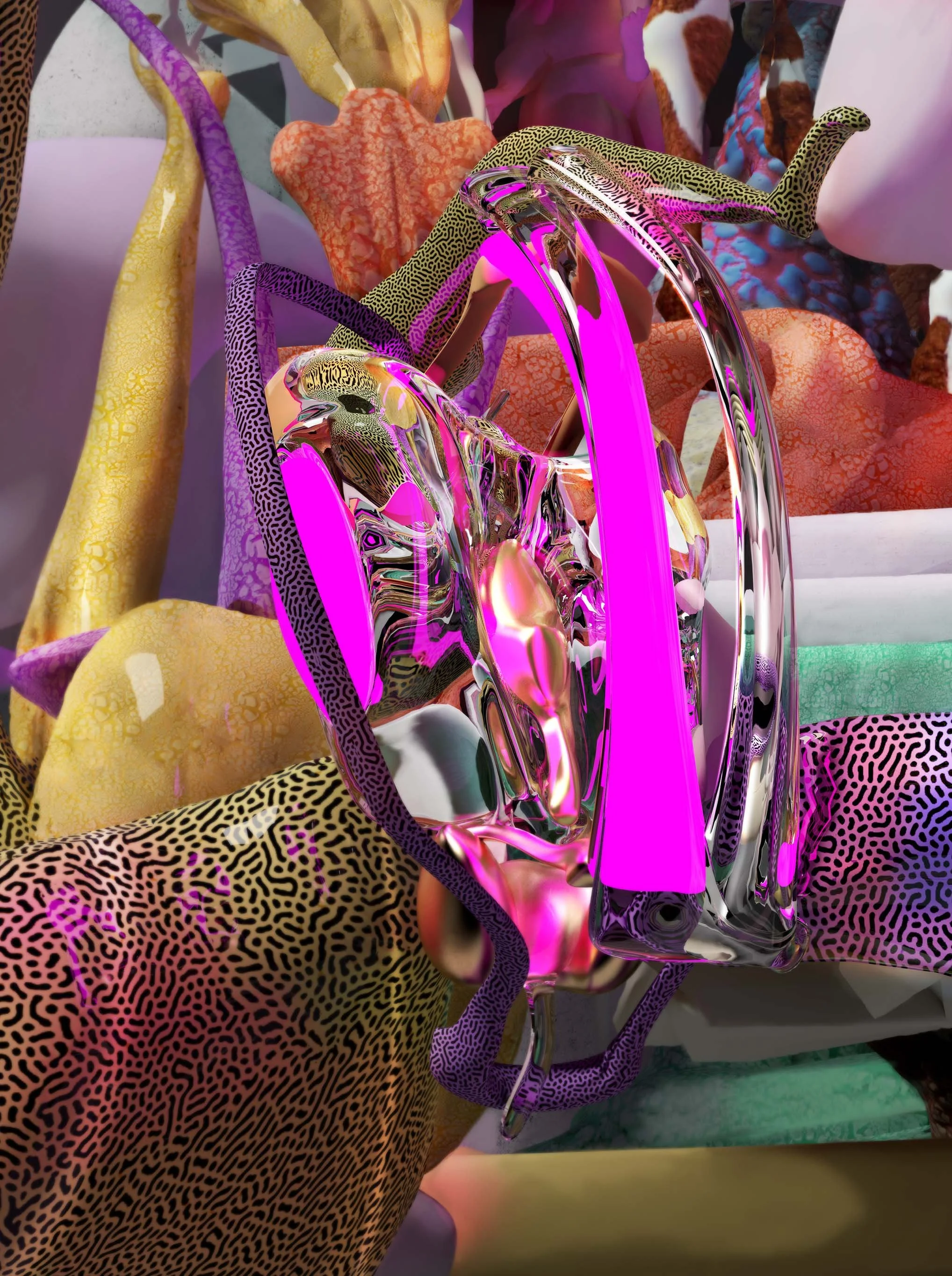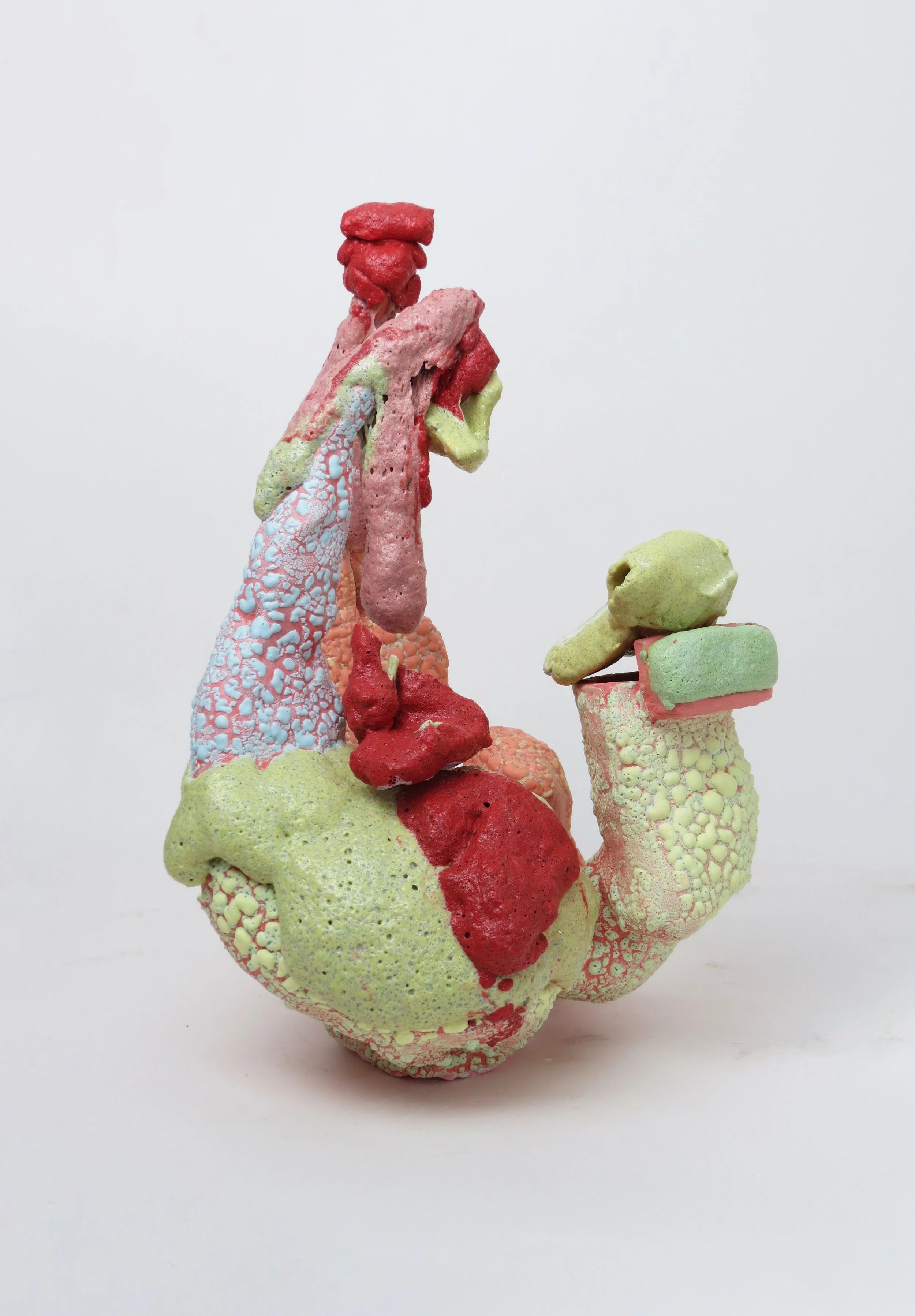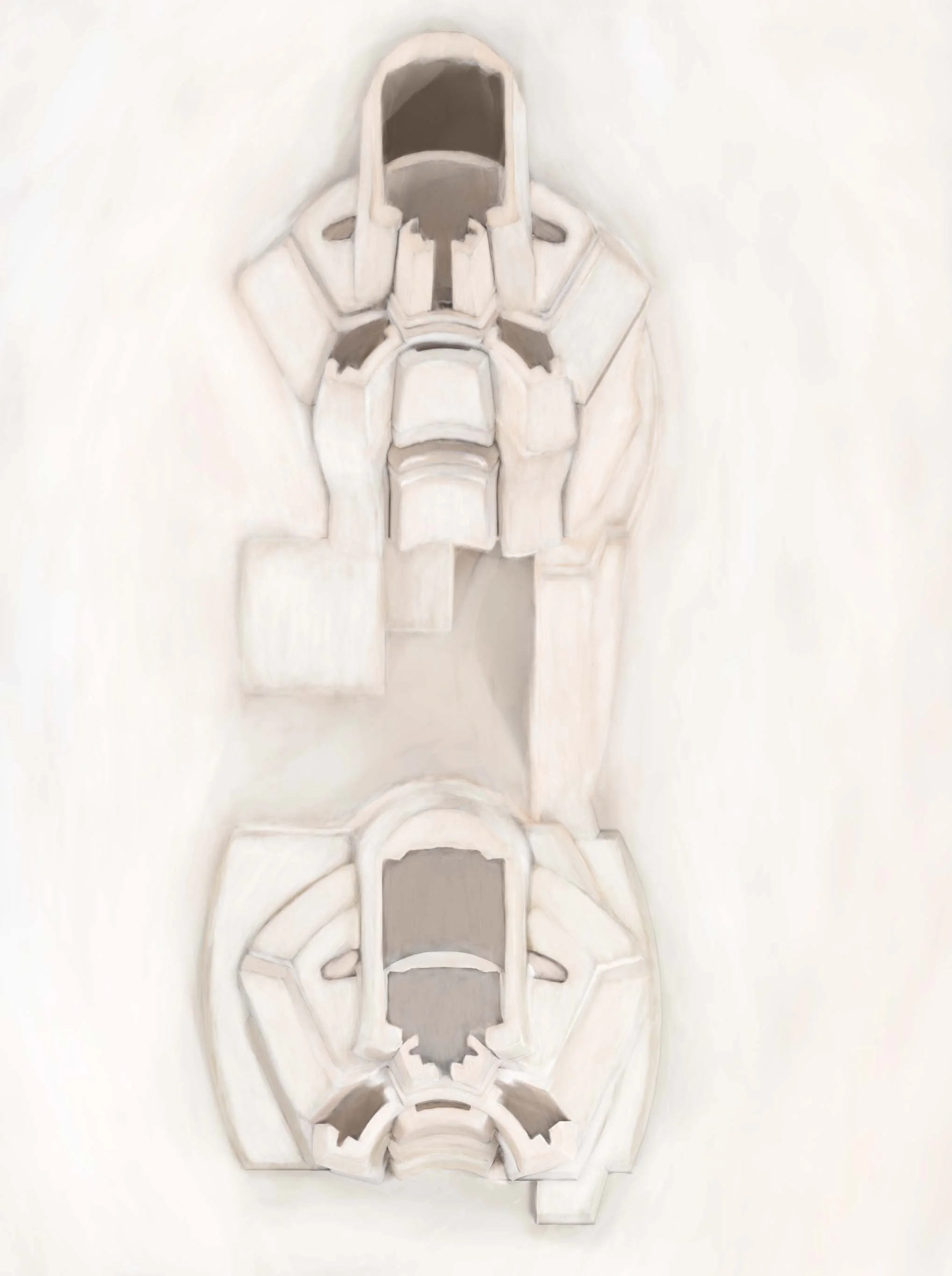Dream Research
❦
Dream Research ❦
‘The Sculptor Architect: drawings, models and bozzetti after Michelangelo’ reimagines architectural design through the lens of sculptural practice, proposing the figure of the sculptor-architect as a counterpoint to the dominant drawing-architect paradigm established during the Renaissance. Rooted in the tactile, aleatoric and corporeal qualities of design practice, the thesis explores how Michelangelo’s lost architectural treatise and his extensive use of preparatory models offer a materially grounded alternative to the intellectual abstraction of Alberti.
Using a practice-led methodology, the research combines historical scholarship with studio experimentation in ceramics, digital modelling and virtual reality. It examines how bodily engagement, figuration and sensory response can inform architectural design, challenging the immaterial and disembodied norms that persist in contemporary practice. The thesis argues that architecture should not only be drawn but drawn forth through physical interaction and visceral intuition.
Michelangelo’s design processes, particularly in projects such as the New Sacristy and the Laurentian Library, are analysed alongside the author’s own sculptural and digital work. These historical precedents are used to develop a contemporary design methodology that embraces the expressive potential of clay, the unpredictability of glaze and the immersive possibilities of virtual modelling. The research also critiques the historical exclusion of colour from sculpture, reclaiming polychromy as a sensorial and critical concern.
In today’s context, this work speaks to questions around embodiment and identity in design. It offers a framework for architectural education and practice that values personal expression, material experimentation and the lived experience of the designer. By foregrounding the body through its gestures, responses and presence, the sculptor architect becomes a figure capable of engaging with the political, emotional and cultural dimensions of space-making.
The thesis concludes by proposing that the sculptor architect is not a historical curiosity but a contemporary necessity. In an era of increasing digital abstraction and disciplinary orthodoxy, this approach invites a return to the studio, the body and the messiness of making. It opens up new possibilities for architectural figuration, storytelling and critical engagement, where design is not only conceptualised but felt.








